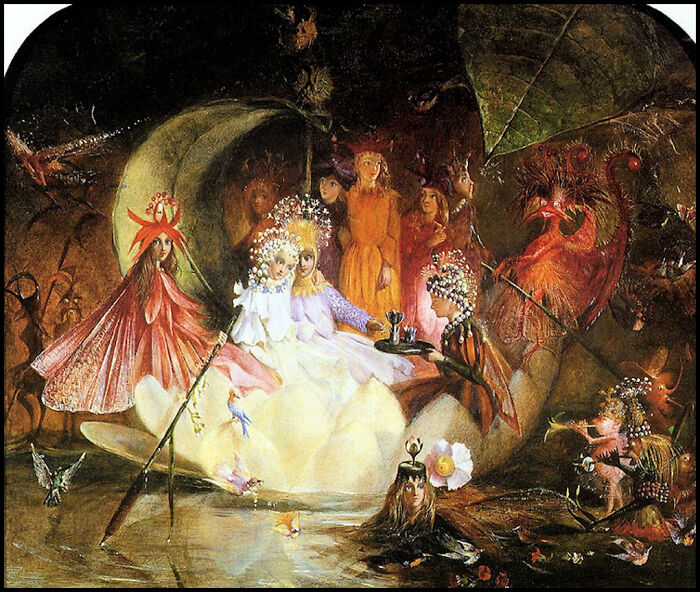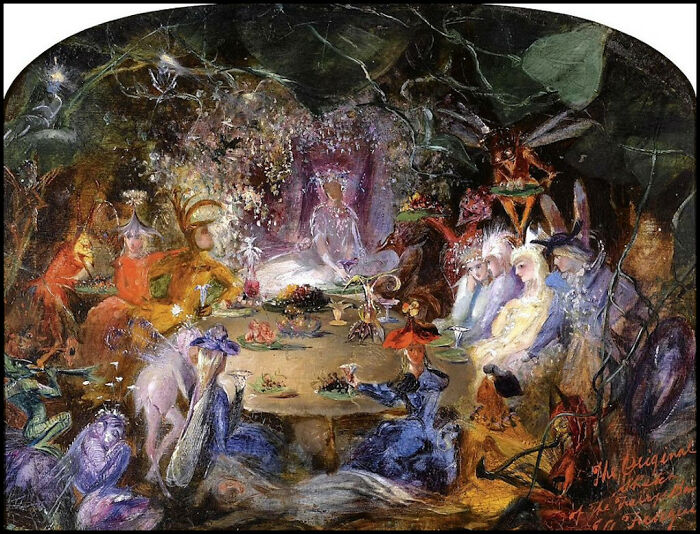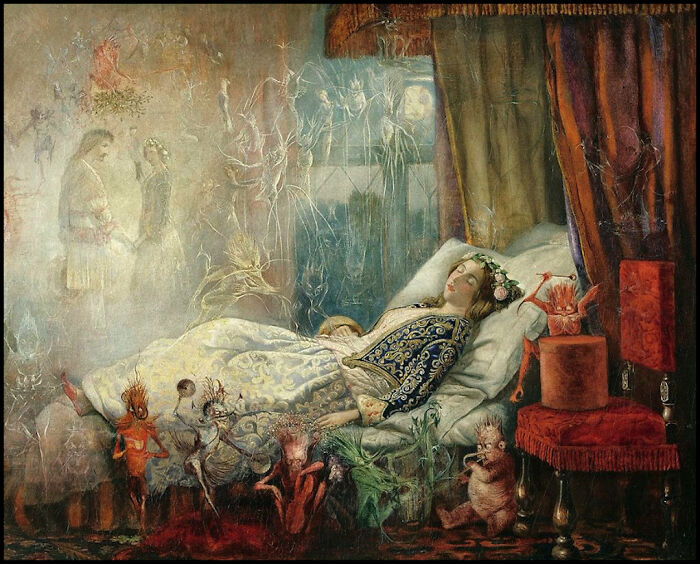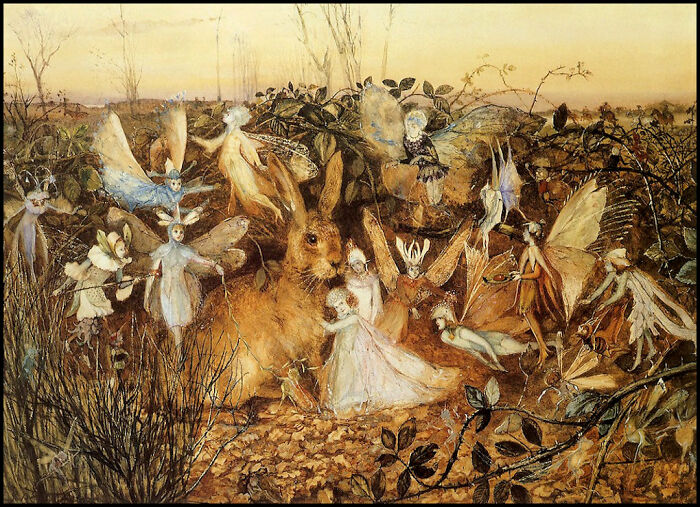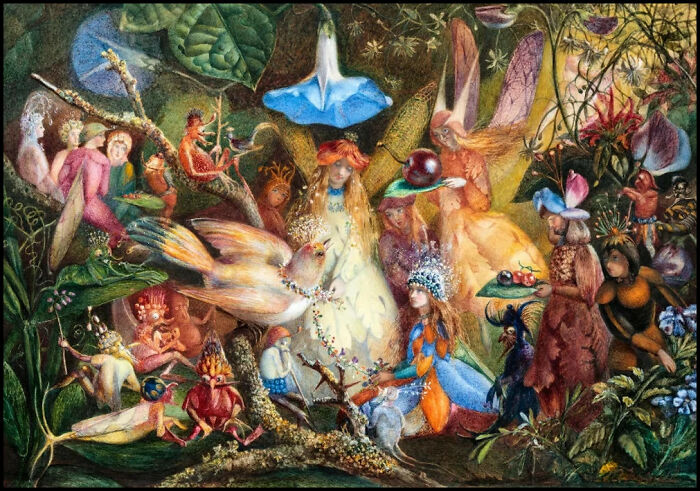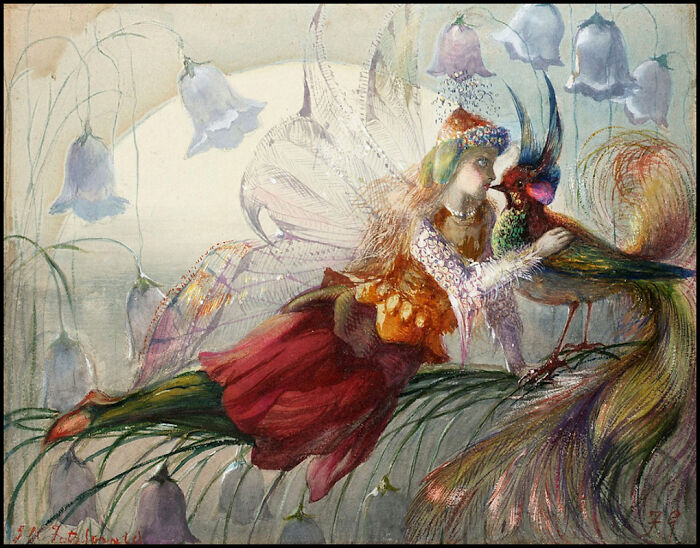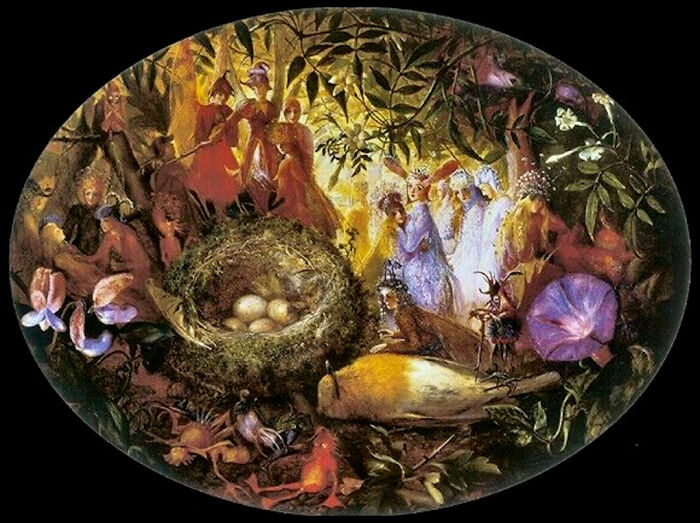Born in Lambeth, London, with a rather “fluid” official birth date, he was the son of poet William Thomas Fitzgerald. His Irish ancestry lent further fairy fascination to his life, Ireland and Eire both being countries of so much fairy folklore and legend. He married in 1849 and he and his wife, Mary, created a home with four sons and two daughters. His youngest daughter, Florence, no doubt inspired by her father, also became an artist and sculptor. During his lifetime as a professional artist, he exhibited at the Royal Academy of Arts in London, in 1845; also at the British Institution, the Society of British Artists, and the Royal Watercolour Society. The popular newspaper, and world’s first news magazine, ‘The Illustrated London News’ commissioned Fitzgerald to illustrate a collection of Christmas fairies that appeared regularly in their festive editions. Often his original paintings would be renamed by galleries as his own titles were a little vague in relation to the subject of the paintings and so there has always been confusion and contradiction in the history of the artwork of Fitzgerald. More info: youtube.com The fairy paintings of Fitzgerald are jewel-like, surreal, sometimes eerie or downright creepy, and yet always with an ethereal beauty. Strange Bosch-like shaped goblins and wicked-faced pixies cavort with pretty fairy females and males; birds are held captive by these otherworldly creatures; small animals hunted or cared for… and the intoxicated dreams of sleeping human men and women are haunted by the images of these peculiar beings. The intense and brilliant colors sometimes used- vivid reds, purples, and blues bring a shocking brightness to many paintings, colors picked straight from the flower garden. Other works have a subtle palette that almost drifts mist-like over the canvas. Although he rarely used literary inspiration for his work one of the few rhymes he did use as inspiration was that of ‘Who Killed Cock Robin’. The great majority of his work though was from his own imagination and most probably also inspired by his Irish ancestry with its acceptance of the fairy folk. In 1902 Fitzgerald exhibited his last painting, and this was at the Royal Academy, an image of Alice in Wonderland. Who knows what Anster Fitzgerald would have made of this strange epitaph to his story, but one thing we do know is that in the world of fantasy artwork, he is still to this day a huge inspiration to those who create work in the Fairy genre. Follow Bored Panda on Google News! Follow us on Flipboard.com/@boredpanda! Please use high-res photos without watermarks Ooops! Your image is too large, maximum file size is 8 MB.
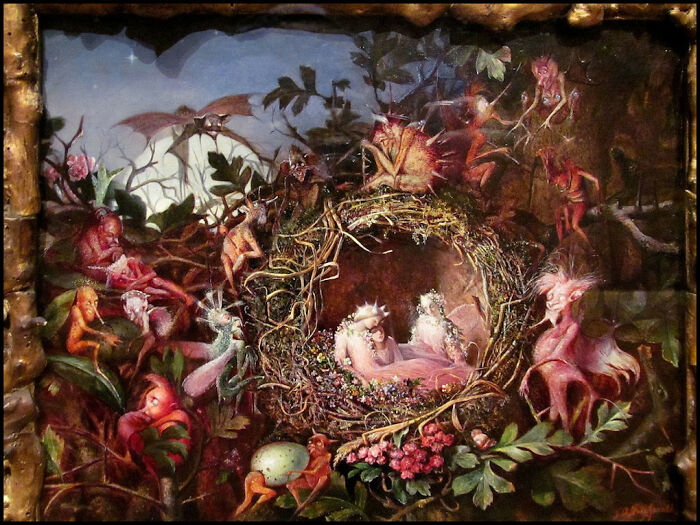

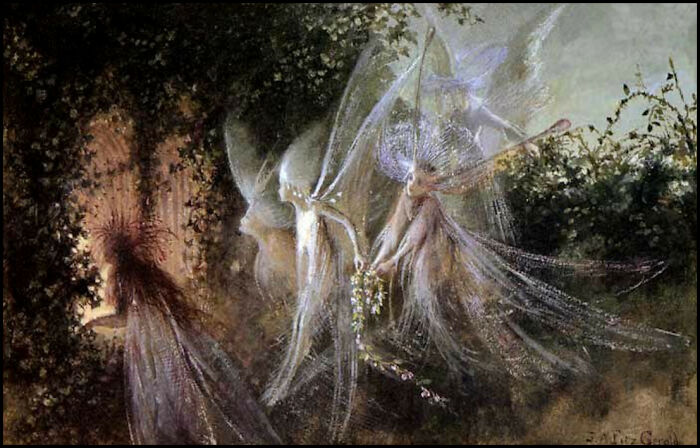

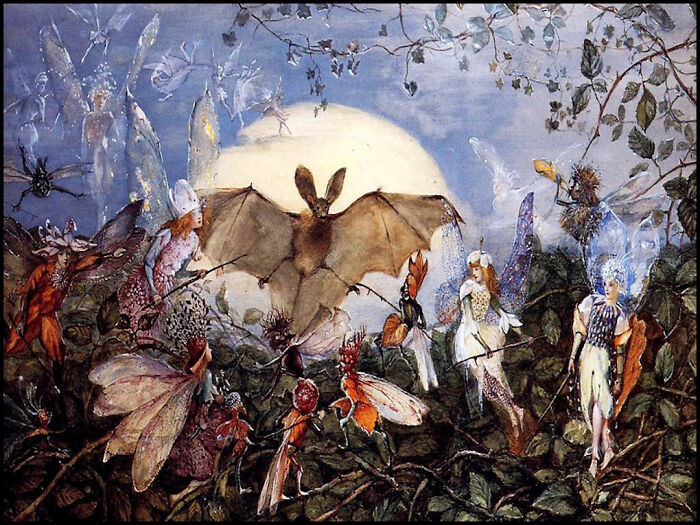

![]()

